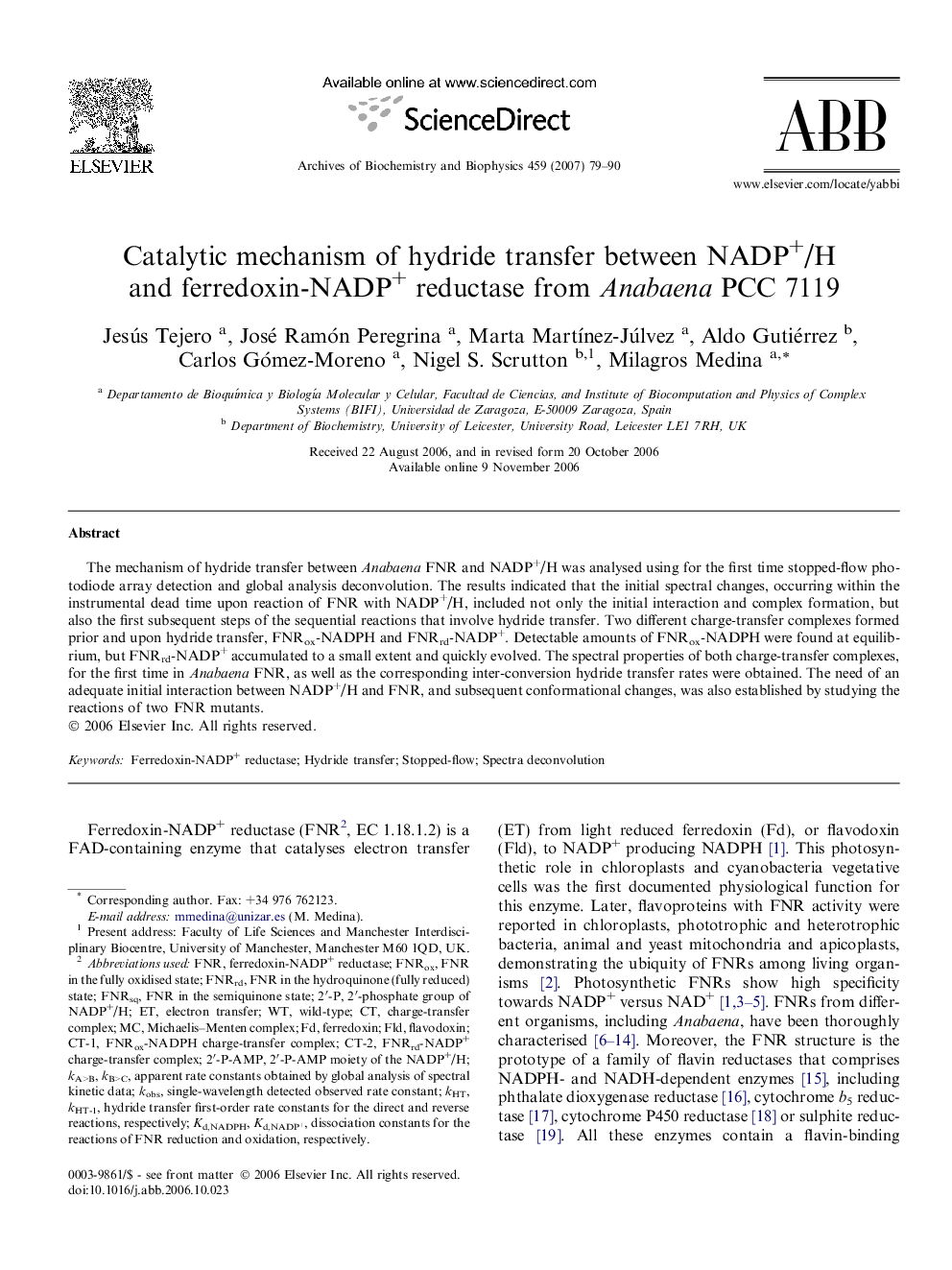| Article ID | Journal | Published Year | Pages | File Type |
|---|---|---|---|---|
| 1927323 | Archives of Biochemistry and Biophysics | 2007 | 12 Pages |
The mechanism of hydride transfer between Anabaena FNR and NADP+/H was analysed using for the first time stopped-flow photodiode array detection and global analysis deconvolution. The results indicated that the initial spectral changes, occurring within the instrumental dead time upon reaction of FNR with NADP+/H, included not only the initial interaction and complex formation, but also the first subsequent steps of the sequential reactions that involve hydride transfer. Two different charge-transfer complexes formed prior and upon hydride transfer, FNRox-NADPH and FNRrd-NADP+. Detectable amounts of FNRox-NADPH were found at equilibrium, but FNRrd-NADP+ accumulated to a small extent and quickly evolved. The spectral properties of both charge-transfer complexes, for the first time in Anabaena FNR, as well as the corresponding inter-conversion hydride transfer rates were obtained. The need of an adequate initial interaction between NADP+/H and FNR, and subsequent conformational changes, was also established by studying the reactions of two FNR mutants.
